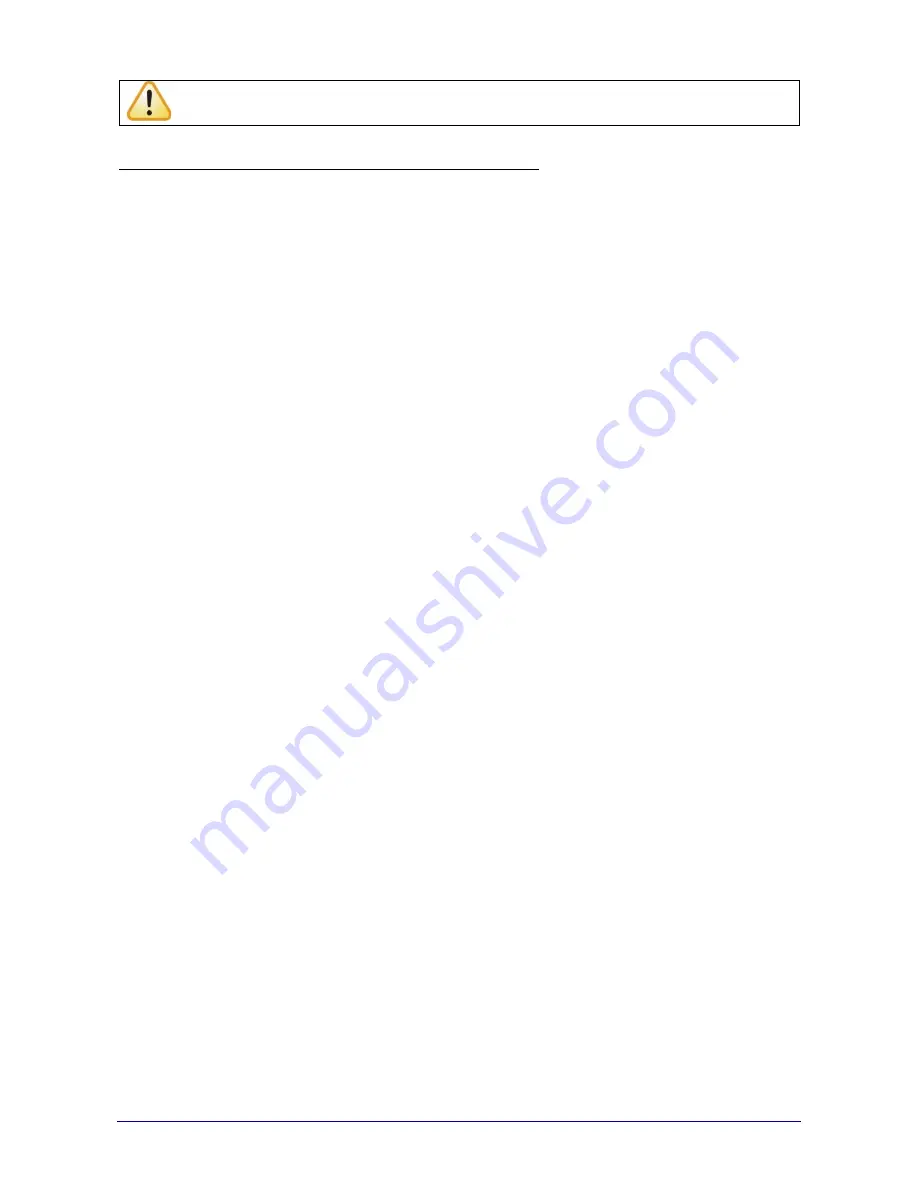
my
PCLab
NOVUS AUTOMATION
9/9
Never send a Modbus write command to a module. Configuration or calibration registers may get corrupted
and the module may get unusable.
ASCII – DELIMITED TEXT (AUT0-SEND MODE ENABLED)
When configured to the auto-send mode, the
my
PCLab
module transmits to its USB port a line of text containing the
current value of all measurement channels. A new line of text is transmitted after each measurement interval, according
to the module configuration.
Any software with serial communication capabilities can receive these data. When configuring the serial communication
parameters of the software, set the COM port number assigned to the device. The USB port ignores all other serial
communication parameters.
•
Communication Port
: Select the COM port number assigned to the
myPCLab
.
•
Baud rate
: any
•
Number of data bits
: any
•
Stop bits
: any
•
Parity
: any
The simplest way to receive and display data is using a simple communication terminal software, like Windows®
HyperTerminal. This software display on the screen all data received in the specified COM port. Other software like
Matlab
,
Simulink
,
HPVee
,
Testpoint
, can also be configured to receive and parse measured data.
When operating in the auto-send mode, a
my
PCLab
don’t expect to receive any information from the USB port. It
transmits data continuously, with no control from the receiver. If during a transmission the module receives a Modbus
RTU command, it will suspend the auto-
send mode for 3 seconds and answer the Modbus request. After 3 seconds the
auto-send mode will resume.
The line of text sent after each measurement interval has the following format:
#AAA;BBB;CCC;DDD;EEE;FFF\r\n
Where:
•
“
#
” is the start of line delimiter.
•
“
;
” is the separator of me
asurement values.
•
“
AAA
” is the value of channel 3 (digital input).
•
“
BBB
” is the value of channel 1.
•
“
CCC
” is the value of channel 2.
•
“
DDD
” is the value of the ambient temperature.
•
“
EEE
” is the current counting, timing or frequency value, depending on the c
onfiguration (not multiplied
by any scale factor).
•
“
FFF
” is the time in milliseconds since the transmission of the first line.
•
“
\r\n
” are ASCII values 13 (Carriage Return) and 10 (Line Feed), end of line delimiters (these
characters are not visible).
Measurements containing values with decimal separators will be transmitted with the character ‘.’ (ASCII 46). Examples:
#100;258.1;
-
5.7;24.6;16772
#0;4087;50.3;0;4900
#-
10;
-
10.9;
-
5000;19.4;338105









